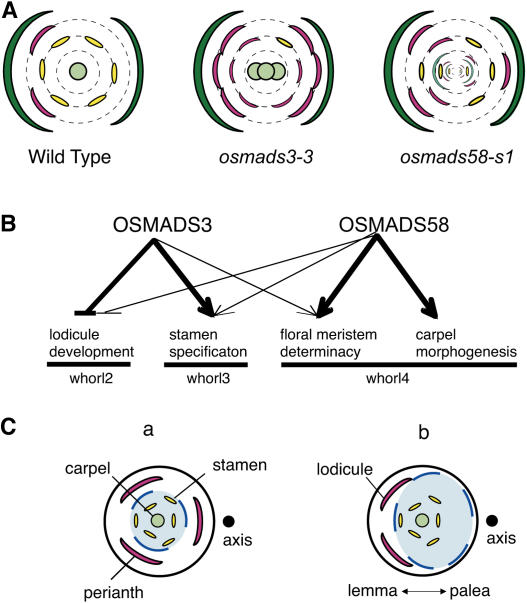Figure 8.
Schematic Representation of the Function of OSMADS3 and OSMADS58.
(A) Typical flower phenotypes of the wild type, osmads3, and osmads58. Green, lemma (left) and palea (right); pink, lodicules; yellow, stamens; pale green, carpels or carpel-like organs.
(B) Functional diversification of OSMADS3 and OSMADS58. Thin arrows indicate a weak contribution of gene function.
(C) The asymmetric arrangement of lodicules and the expression domain of C-class genes. (a) A putative ancestral flower of rice. (b) A present-day rice flower. Blue colors indicate the expression domains of C-class genes.

